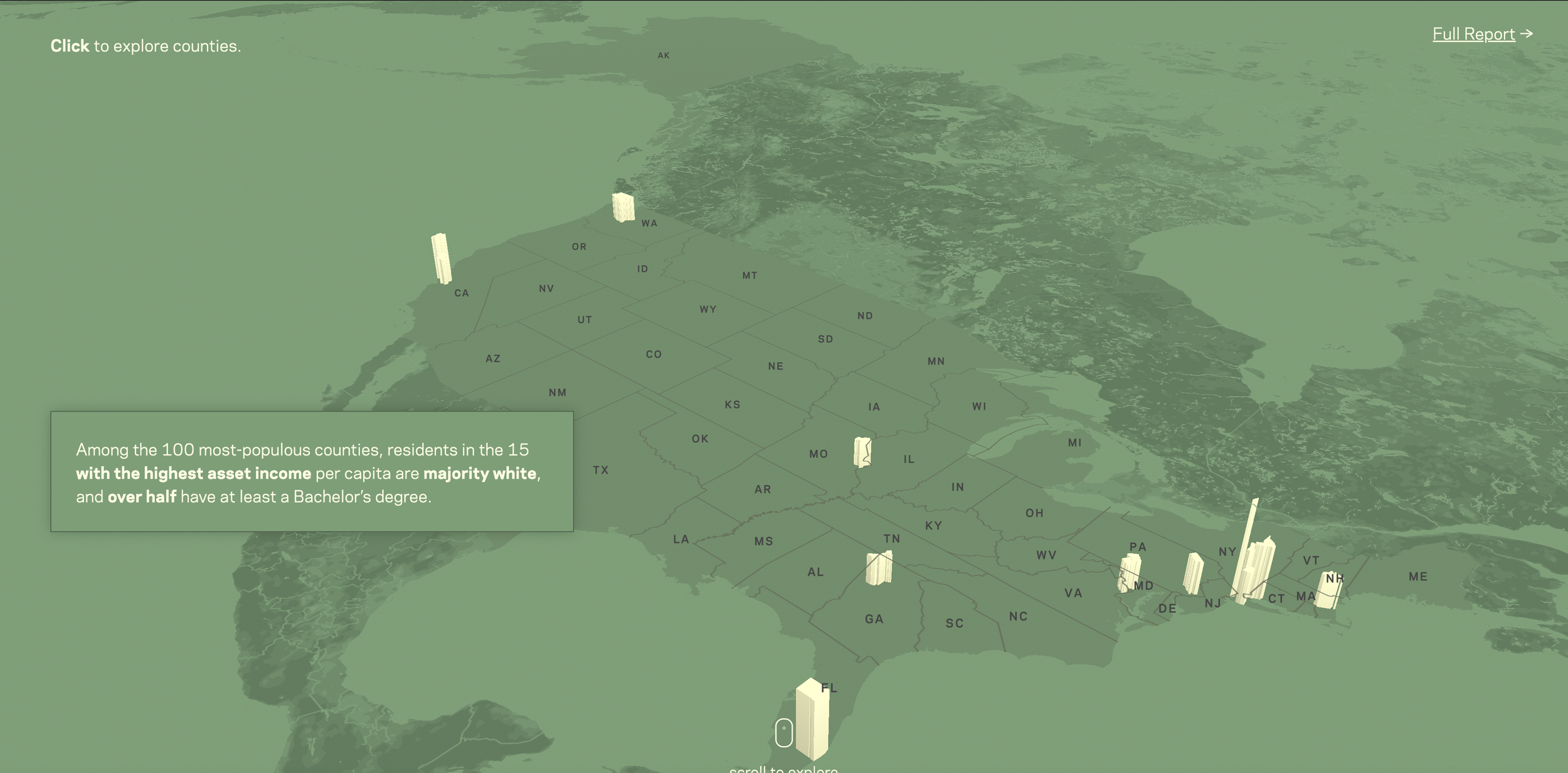Inclusive Wealth Building
Unveiling the geographic disparities in wealth from non-labor income
Team
Periscopic
Year
2021
My Role
Design Strategy, Visual Design
Project
In partnership with the Economic Innovation Group and their Inclusive Wealth Building Initiative, this project addresses the concept of economic inequality, and specifically geographic concentrations of the income-generating assets dividends, interest, and rent. View the full project here.
My Contributions
Expanding on initial conceptual thinking, I helped determine effective ways to present the data, adapted client typography and colors into a project-specific design system, and collaborated across teams to structure the interactive experience and weave together a cohesive scrolling narrative.
Organized into several chapters, the narrative guides users through the subject matter, explaining how the widening gaps in asset ownership serve as a critical indicator of financial stability and enable individuals to prepare for emergencies, plan future goals, and engage in the economy beyond their earned wages.
Building the Narrative
Using the report that would serve as the project’s foundation, we familiarized ourselves with the subject and began shaping the narrative, while the data team explored the data in depth. This initial narrative framework served as a guide when we converged with the data team, allowing us to align our findings, discuss how the data supported the overall story, pinpoint where it could best illustrate key points, and identify areas needing further investigation.
When a client targets a general or informed public, I view my acclimation process as a test of how well the information is communicated. I pay attention to anything unfamiliar, unexpected, confusing, or difficult to grasp, as well as technical language and moments of clarity. Since we're approaching the content as new users, just like some of our audience, this experience serves as a valuable "prototype" for the final product.
In transforming this content into an effective narrative, we prioritized key audiences—political press, policy staff, and the general public—to clearly communicate the importance of this asset-based income and its role in the growing disparity of wealth.
As users scroll through the narrative, the map dynamically pans and zooms to significant geographic locations highlighted in response to key insights and interactive elements presented in the side panel. The panel was designed to slide in at specific narrative points with contextual details and fade out as the narrative progresses.
Supporting the Narrative with Contextual Insights
Once the core elements were established—the dynamic map and narrative outline—I focused on the strategy and design for contextual information that would enhance comprehension of the subject matter.
This took shape as a side panel that complements the map and narrative by revealing definitions, contextual details, and region-specific insights. It corresponds with the narrative, starting with simple, static content and progressing to interactive charts. Throughout the development of this component, client input was incorporated to ensure it met their audience’s needs.
Bar charts were an ideal choice because of their familiarity and ability to clearly highlight income disparities, reinforcing the project's objective. To expedite the development process, I produced the animations using Adobe AfterEffects.
Counties were extruded to visually represent per capita non-labor income, with additional visual treatments applied throughout the narrative to emphasize key areas.
Varied Interaction Paths
To diversify the presentation and retain engagement, we designed individual modals for local vignettes that viewers can select or bypass while scrolling. Each modal uses a time series graph to showcase how non-labor income can differ significantly between two neighboring counties. We also established a visual through line, by integrating bar charts that mirrored those in the side panel into the time series graphs.
These examples also serve as a guide for users, demonstrating how to use the data for comparisons and preparing them for the interactive map in the final section.





